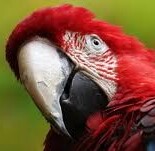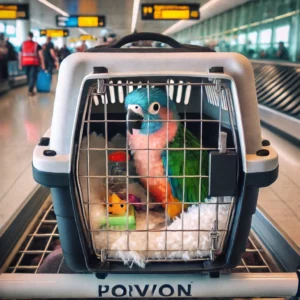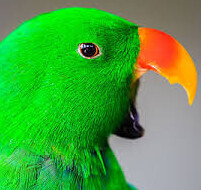Flying with a pet birhttps://whiskerwisemind.com/keep-indoor-cat-happy/d isn’t like hopping on a plane with a cat or dog. Birds are sensitive creatures—their well-being depends on good planning and preparation. Whether you’re moving to a new city or embarking on an extended vacation, bringing your feathered friend along requires more than just buying an extra plane ticket. It’s all about ensuring their safety and comfort from takeoff to landing.
Preparation is key. Birds have specific needs that can make air travel a challenge. From choosing the right carrier to understanding airline policies and ensuring your bird is healthy for travel, attention to detail can make a significant difference. Nothing’s worse than being caught off-guard by an unforeseen regulation or fee.
Navigating the world of air travel with a bird can feel overwhelming, but breaking it down into manageable steps makes it all more approachable. With the right information and careful planning, you can make sure your bird’s journey goes as smoothly as possible. Their comfort and safety should be at the forefront of every decision you make—after all, a happy bird makes for a happy journey.
Airline Policies and Documentation
Before booking your flight, look up the specific rules each airline has about flying with birds. Policies can vary widely, so getting this right is crucial to a hassle-free experience. Start by visiting the airline’s official website or calling their customer service for the most current information.
Most airlines will require certain documents before letting your feathered friend board. Health certificates are usually a must—these confirm that your bird is disease-free and fit to travel. These certificates typically need to be issued within a specific timeframe before the flight, often 10 days. Keep an eye on these deadlines to avoid last-minute hiccups.
Vaccinations might be another requirement. Though not all birds need them, some countries and airlines have strict rules about specific diseases. Your avian vet can guide you on what’s necessary depending on your destination.
Fees are another thing to watch out for. Flying a bird is not always cheap. Different airlines have different fees for traveling with pets, and birds often fall into a special category. Expect charges for both carry-on and checked options, and don’t forget to factor this into your travel budget.
Finally, confirm the carrier size restrictions. Airlines usually have strict dimensions for pet carriers allowed in the cabin, and this is particularly important if your bird needs to travel with you in the passenger area. Double-check these guidelines and make sure your carrier fits within the allowed measurements.
Choosing and Preparing the Carrier
First things first, snag an airline-approved carrier specifically designed for birds. Guidelines on size and construction are usually strict, so make sure to double-check with the airline to match their requirements. The carrier should be well-ventilated, secure, and spacious enough for your bird to move around a bit without feeling cramped.
Next, help your bird get used to the carrier. This shouldn’t be an overnight thing. Start a few weeks ahead by placing the carrier in a familiar spot at home with the door open. Put some of their favorite toys and treats inside so they see it as a safe space. Gradually increase the time they spend in the carrier, aiming to make it a normal part of their day.
Line the carrier with absorbent bird-safe bedding to manage any messes during the trip. Throw in some shredded paper or a soft towel for added comfort. Because birds can be very sensitive to changes in their environment, the goal here is to make the carrier feel as homey as possible.
Also, ensure the carrier has secure latches. You don’t want any surprises mid-flight. Attach or label the carrier with all relevant information like your contact details, and a note about the bird inside for added safety.
Finally, consider a ‘pet calm’ spray or pheromone wipes to lessen any travel anxiety. These products can make the space feel more familiar and help your bird stay relaxed. Always consult with your avian vet before using any new product to make sure it’s safe for your specific bird.
Pre-Flight Preparations
Before jetting off, schedule a health check-up with an avian veterinarian. This isn’t just about getting a health certificate; it’s about ensuring your bird is fit to travel. Discuss any health concerns, and make sure vaccinations are up-to-date if needed.
Feeding your bird properly before the trip is crucial. Don’t overfeed right before the flight, as a full stomach can cause discomfort. Aim for a light meal a few hours before departure. Hydration is equally important. Birds can become dehydrated easily, especially in the dry air of an airplane cabin. Offer water but avoid filling the carrier with dishes that might spill or make a mess. Consider using a no-spill water bottle that attaches to the side of the carrier.
Make sure to pack a travel kit. This should include essential items like extra food, treats, a small water bottle, and cleanup supplies. Prepare for the unexpected by having everything you might need within easy reach. It’s also a good idea to carry a blanket or cover to place over the carrier, which can help keep your bird calm by blocking out unfamiliar sights and sounds.
Get your bird accustomed to short car rides if it’s not something they’re used to. This way, they’re not completely thrown off when the trip to the airport and the airplane experience hits. A few short rides around your neighborhood can make a world of difference.
Also, check the weather conditions for both your departure and arrival locations. Extreme temperatures can be stressful for birds, so plan accordingly. If it’s unusually hot or cold, take extra steps to regulate the environment around the carrier during travel.
In-Flight Care
Keeping your bird calm and comfortable during the flight starts with managing stress. Having a towel or cover handy can be a lifesaver. Draping it over the carrier can block out the hustle and bustle of the cabin, creating a more peaceful environment.
Check on your bird periodically but avoid unnecessary interactions. Too much attention can actually increase stress levels. Instead, offer some reassuring words and make sure everything inside the carrier is secure.
Hydration remains key. Though you won’t be able to open the carrier mid-flight, have a water dispenser that attaches to the inside of the carrier. Some birds also enjoy chewing on fresh veggies, which can provide a bit of moisture.
Managing the temperature is another consideration. Airplane cabins can be chilly. If you notice your bird appearing cold (fluffing up feathers), use a small blanket inside the carrier to provide additional warmth.
Keep disruptions to a minimum. Avoid bumping the carrier or placing it in overhead bins. Ideally, store it under the seat in front of you, where it’s both secure and accessible.
Above all, stay calm yourself. Birds are perceptive and can pick up on your anxiety. The calmer you are, the more relaxed your bird will be. Prepare ahead, and you’ll contribute to a smoother and more comfortable journey for your feathered friend.
Post-Flight Care
As soon as you land, check on your bird right away. Look for any signs of stress or discomfort. Fluffed-up feathers, heavy breathing, or unusual silence can all indicate stress. If you notice anything off, a quick visit to an avian vet might be in order.
Hydration is the first priority. Offer fresh water as soon as possible. Your bird may not have drunk much during the flight and could be dehydrated. Similarly, feeding small portions of a familiar diet can help settle their stomach and provide comfort.
Find a quiet spot where your bird can acclimate to the new environment. Whether it’s a hotel room or your new home, keep the area calm and free from loud noises. Unpacking gradually instead of all at once can help limit stress.
Monitor your bird’s behavior over the next few days. Signs of stress can sometimes appear later. Increased vocalization, loss of appetite, or unusual aggression might be red flags. If anything seems off, consult your avian vet.
Lastly, give your bird lots of familiar items. Favorite toys, a cozy perch, and even the same type of bedding can make a new place feel more like home. The goal is to create a smooth transition, helping your bird adjust and settle in comfortably.
Kind regards Tim
